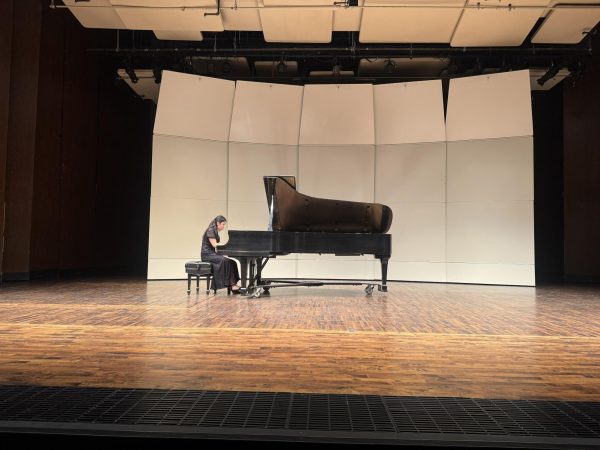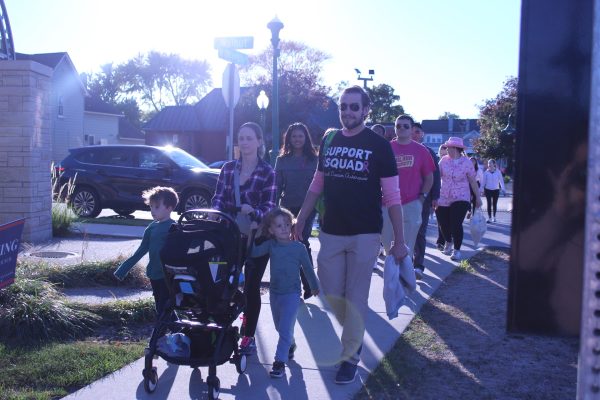Gallery exhibition explores paradise through art
Say hello to “Your Very Own Paradise,” the ongoing exhibition at the Oakland University Art Gallery. Curated by Dick Goody, “Paradise” showcases the work of 13 artists of various mediums, each piece providing a different vision into what paradise can be and reflections on the very concept of what paradise is.
To help exhibitgoers get into the state of mind for pondering such a topic, Goody has worked to create a radically different type of gallery experience. Goody mentioned that a survey of gallerygoers showed the art gallery atmosphere was church-like, which is not at all what the curator wants.
“We all have our own voice,” Goody said, “and we have an ability to interpret things. And if we are given these cues to [interpret] — you read the exhibition tablet, you hear the music, you look at the work — then you feel as if you are participating in the thing.”
The scene people walk into is more like a dorm room than a museum. Hard benches and silence are replaced with plush rugs, knitted cushions, soft lighting and a soundtrack of nature and Tibetan bowl sounds, along with various relaxing songs.
The works on display vary in medium and content, each one providing a glimpse into their creator’s utopia. One wall showcases the quaint scenes of Maira Kalman while Rebecca Morgan’s exaggerated faces watch on from the opposite wall. Lamar Peterson’s haunting “A Young Man With a Fish” hangs between the dueling walls.
Fabrications of urban utopias of Marc Yankus’s “Nineteenth Street” and Andrew Lenaghan’s “Blue Time (Harry’s House E. 19th St.)” challenge the more pastoral paradises of Melanie Daniel’s “Goat Love in a Digital Age” and Amer Kobaslija’s “Fish Feeders, Orange Park II.”
Other works take a more abstract route on the road to paradise. Nick Archer and Tayna Marcuse find beauty in decay with “White Car” and her two “Fallen” works, respectively. Marcuse opts for rotting apples while Archer visualizes a rusting automobile.
Paradise is a complicated subject that spans ideological definitions, religious influence and personal tastes. To help discuss the various paradises that exist, a seven-part lecture series will run alongside the exhibition.
One of those speakers is Jo Reger, sociology professor and chair for the Department of Sociology, Anthropology, Social Work and Criminal Justice. Her lecture, “Singing to Utopia: Lesbianism, Feminism and Music,” will tell the story of women who were pushed out of the music industry and founded a community in the 1960s, ’70s and ’80s.
“What I am going to talk about is these three contexts of exclusion that pushed women out and ended up forming this community that was really seeking to create a utopian-like society based around music,” Reger said.
She plans on using her Oct. 2 lecture to report on her research into the community, play some of the records they produced and explore how pseudo-utopias collapse.
The exhibit runs until Nov. 28 in 208 Wilson Hall. Lectures will be held at noon in the gallery on Sept. 18 and 26, Oct. 2, 7, 8, 16 and 24. Admission for everything is free.





